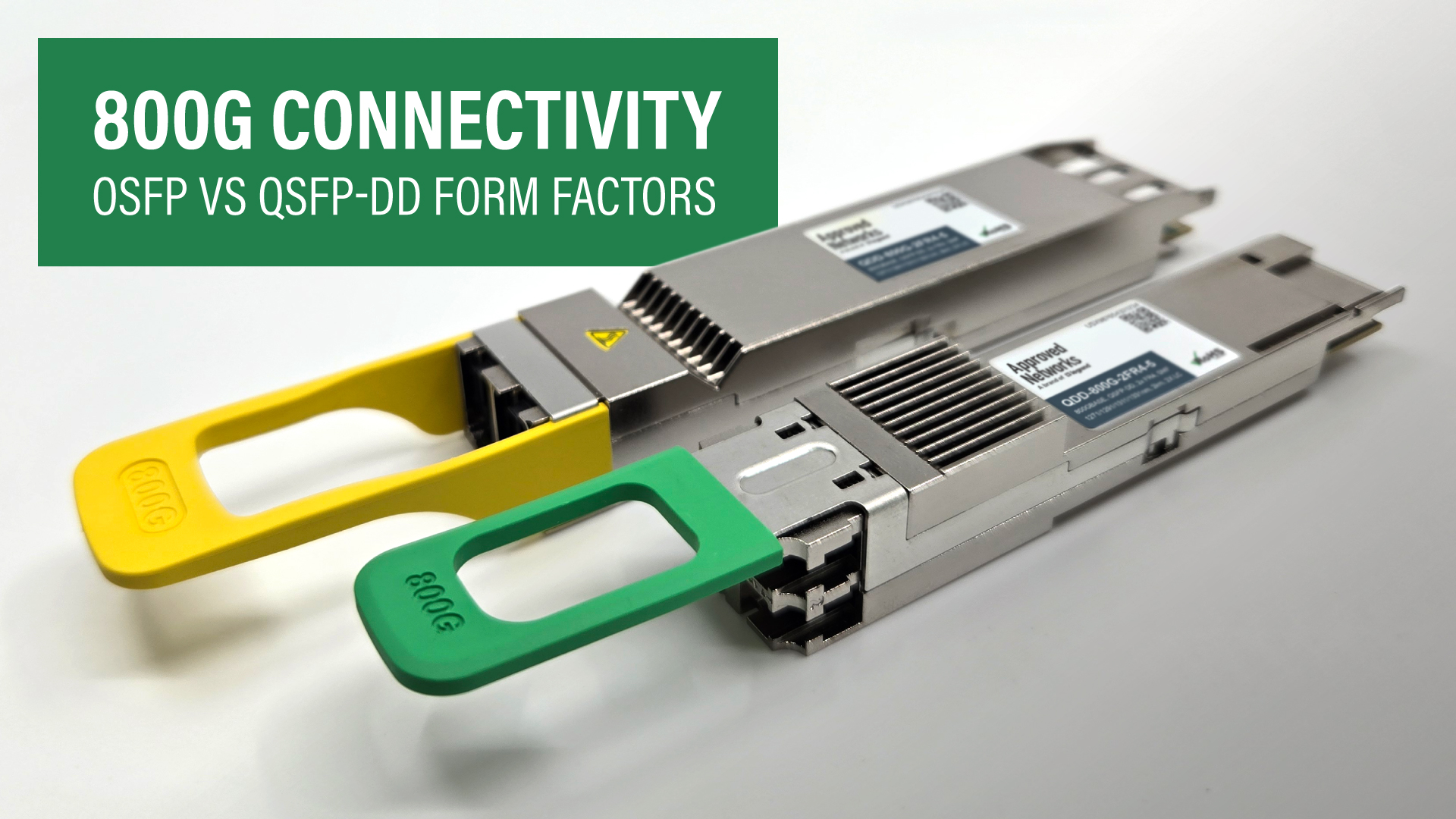Choosing Between OSFP and QSFP-DD: Key Considerations for 800G Optical Transceivers
Posted by Lakeisha Turks on Oct 28, 2025

As the demand for bandwidth surges, driven by AI, machine learning, and high-performance computing (HPC), 800G optical transceivers have become essential for modern data centers. Both OSFP (Octal Small Form-factor Pluggable) and QSFP-DD (Quad Small Form-factor Pluggable Double Density) support 400G and 800G speeds; however, understanding the nuances between them is essential to making informed infrastructure decisions that align with your networking goals.
Form Factor, Size, and Thermal Management
QSFP-DD maintains a compact size, closely resembling its QSFP predecessors, making it an excellent choice for environments that require high port density within limited rack space. Its smaller footprint also contributes to power efficiency, typically operating between 7W and 12W, which helps limit heat output, though higher-power deployments may require additional cooling.
In contrast, OSFP is physically larger, allowing for greater heat dissipation and supporting higher power consumption in the range of 12W to 15W or more. This extra power headroom is critical for demanding workloads such as AI training clusters and HPC, where advanced optics and robust performance are essential.
Compatibility and Scalability
QSFP-DD’s advantage lies in its backward compatibility; it can interface seamlessly with earlier QSFP generations like QSFP+, QSFP28, and QSFP56. This makes it highly versatile for organizations integrating new 800G equipment alongside legacy infrastructure, ensuring smoother transitions, and phased upgrades.
OSFP, while offering greater scalability for future bandwidth expansion, has limited backward compatibility and often requires adapters for older QSFP equipment. This trade-off makes OSFP better suited for greenfield deployments or environments specifically architected around high-power, high-performance needs.
Performance and Application Use Cases
Both form factors deliver strong performance at 400G and 800G speeds. QSFP-DD is commonly favored in cloud, telecom, and enterprise data centers where power efficiency, compact size, and infrastructure compatibility are essential. Many telecom providers prefer QSFP-DD due to these benefits, and a wide range of 800G solutions leverage this form factor.
OSFP’s design focus on power and thermal headroom has driven adoption in AI/ML clusters, HPC environments, and advanced research centers, where high power and complex optics demands require a robust solution.
Making the Right Choice
Ultimately, selecting between OSFP and QSFP-DD isn’t just a matter of preference; it’s about aligning your choice with your existing hardware, power, thermal, and scalability needs. Your network equipment largely dictates the suitable transceiver form factor, so understanding the tradeoffs and benefits of each helps future-proof your infrastructure.

How Approved Networks Supports Your Strategy
Approved Networks offers a comprehensive portfolio of 800G transceivers supporting both OSFP and QSFP-DD form factors, ensuring compatibility with your chosen infrastructure. Whether you’re deploying OSFP or QSFP-DD platforms, our transceivers integrate seamlessly with OEM platforms while providing the performance and flexibility demanded by today’s AI-driven data centers.
From short-range to long-haul connectivity (50 meters to 10 kilometers), our fiber optic solutions are designed to meet diverse application needs, helping your network scale efficiently without compromise.
Explore our full line of 800G high-performance optical transceivers designed to align effortlessly with your existing network. Whether you're scaling for AI, upgrading your data center, or expanding your telecom capabilities, Approved Networks has flexible fiber optic solutions that can be tailored to your network connectivity needs.